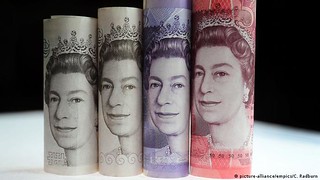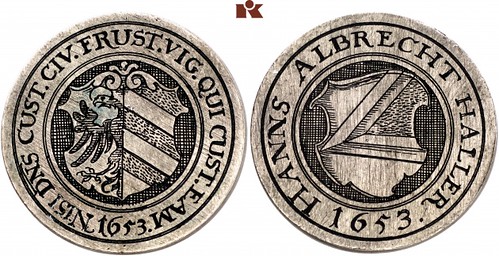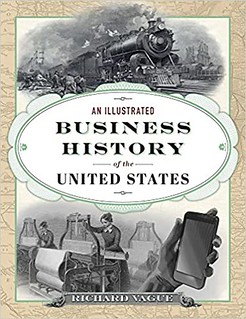
PREV ARTICLE
NEXT ARTICLE
FULL ISSUE
PREV FULL ISSUE
V25 2022 INDEX E-SYLUM ARCHIVE LOOSE CHANGE: SEPTEMBER 18, 2022Here are some additional items in the media this week that may be of interest. -Editor Howard Berlin passed along this article on the massive cost of changing queen to king on banknotes, coins, stamps and post boxes. Thanks. -Editor
The Bank of England says it costs approximately 7 to 8 pence to produce a banknote. There are some 4.7 billion banknotes in circulation in the UK. So the cost to replace these can be estimated at around 350 million pounds, according to Joe Trewick, a writer at The Coin Expert, a website for coin collectors and hobbyists. "The Royal Mint does not disclose how much it costs to produce new coins, but with 29 million currently in circulation to replace, we can assume the total cost will also be several million pounds," Trewick told DW.
To read the complete article, see:
This 2017 article from Vogue is about "The One Time a Week" (other than Maundy Thursday, I suppose) that Queen Elizabeth II carried cash. Found via News & Notes from the Society of Paper Money Collectors (Volume VIII, Number 13, September 13, 2022). -Editor Urban legend has it that Queen Elizabeth II's not one for paper currency. In fact, it's a key plot point of the movie A Royal Night Out, where the then-princess sneaks out for V-E Day, but needs to be rescued by a handsome soldier because she doesn't have any cash. (Bus fare, what's that?) But, now, reports are circulating that the Queen does, on one day a week carry cash in that famous handbag of hers (which, rumor has it, is also filled with fountain pens, mints, and lipstick).
According to The Telegraph, the Queen brings a That five pounds likely comes from an ATM in the Buckingham Palace basement, which was installed by Coutts, the bank of the Royal Family. It's been there since at least 2001.
To read the complete article, see:
This Künker article examines Nuremberg Gate Tokens. -Editor The primary purpose of a gate token is to enable its owner to pass any gate of a city wall, at any time, and – above all – without being subject to inspection. What seems commonplace to us couldn't be taken for granted when the Nuremberg gate tokens that are on offer at Künker were created in the 17th century. After all, the city wall strictly separated the inside from the outside at that time – and there were two reasons for this. The first was a matter of defense. City walls protected the city from being conquered. That's why city gates had to be carefully patrolled to prevent disguised enemies from entering the city. At night the gates were closed. Anyone who didn't pass them before the evening bell rang had to spend the night outside the walls.
But that wasn't the only purpose of a city wall. It also served as a customs barrier. Those who came from outside to sell goods at the Nuremberg market had to pay customs at the city gate. After all, this was the easiest place to check how many head of cattle the Hungarian herds comprised that streamed across Nuremberg's Fleischbrücke (
Those who possessed a gate token weren't subject to this control, which is why these specimens are also referred to as Who Got Such a Gate Token?
To read the complete article, see:
Pablo Hoffman passed along this article about the origin of the U.S. Federal Reserve Bank, Thanks. -Editor
"Wilson sought advice from Virginia representative Carter Glass, who would become the chair of the House Committee on Banking and Currency, and economist H. Parker Willis, who devised an alternate plan that called for a network of twelve reserve banks in selected cities. This plan passed and became the Federal Reserve Act of 1913. It incorporated much of Aldrich's original plan, which Wilson 'believed was 60–70 percent correct.' "When the initial shots of World War I were fired in the summer of 1914, it caused a crisis and runs at U.S. banks. Treasury secretary William McAdoo quickly solved the banks' liquidity problems by using the powers of the prescient Aldrich-Vreeland Act, whereby the country had $500 million in preprinted emergency banknotes on hand for these banks to use. The banks could deposit government bonds or short-term notes with the Treasury and receive these notes in return, and thus meet the runs. "Confidence in the power of newly established Federal Reserve was high. In 1915, the first chairman of the Federal Reserve, Charles Hamlin, predicted 'we will never have any more panics.'
To read the complete article, see:
Bibliophiles and readers in general should enjoy this piece about errors in print from the There is a sublimity in inadvertency, a profundity in accident. Certainly an inevitability. Perhaps a lyric poet can polish the 14 lines of a sonnet to an immaculate sheen, but an ample preponderance of text is going to accrue some errors, just as no consumer can avoid a few spider legs in their peanut butter and the FDA sets limits on the number of rodent hairs acceptable in your oatmeal. A finished novel will go through rounds of revisions at the hands of the author, sometimes a whole coterie of copyeditors, and any number of eyes that will see it before ink is pressed onto paper, and still a carefully examined book will inevitably have typos. The fact is that these sorts of mistakes, while perhaps embarrassing, are also largely irrelevant, and few notice them other than anal-retentive punctilious prigs.
When it was claimed that Shakespeare never blotted out a single word, his theatrical colleague and noted frenemy Ben Jonson quipped,
To read the complete article, see:
Wayne Homren, Editor The Numismatic Bibliomania Society is a non-profit organization promoting numismatic literature. See our web site at coinbooks.org. To submit items for publication in The E-Sylum, write to the Editor at this address: whomren@gmail.com To subscribe go to: https://my.binhost.com/lists/listinfo/esylum All Rights Reserved. NBS Home Page Contact the NBS webmaster 
|




